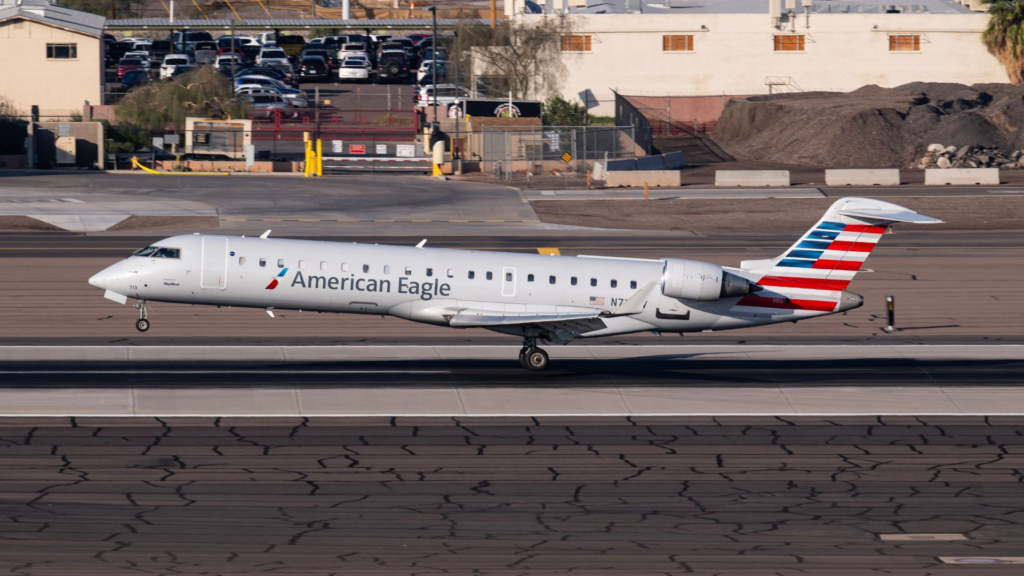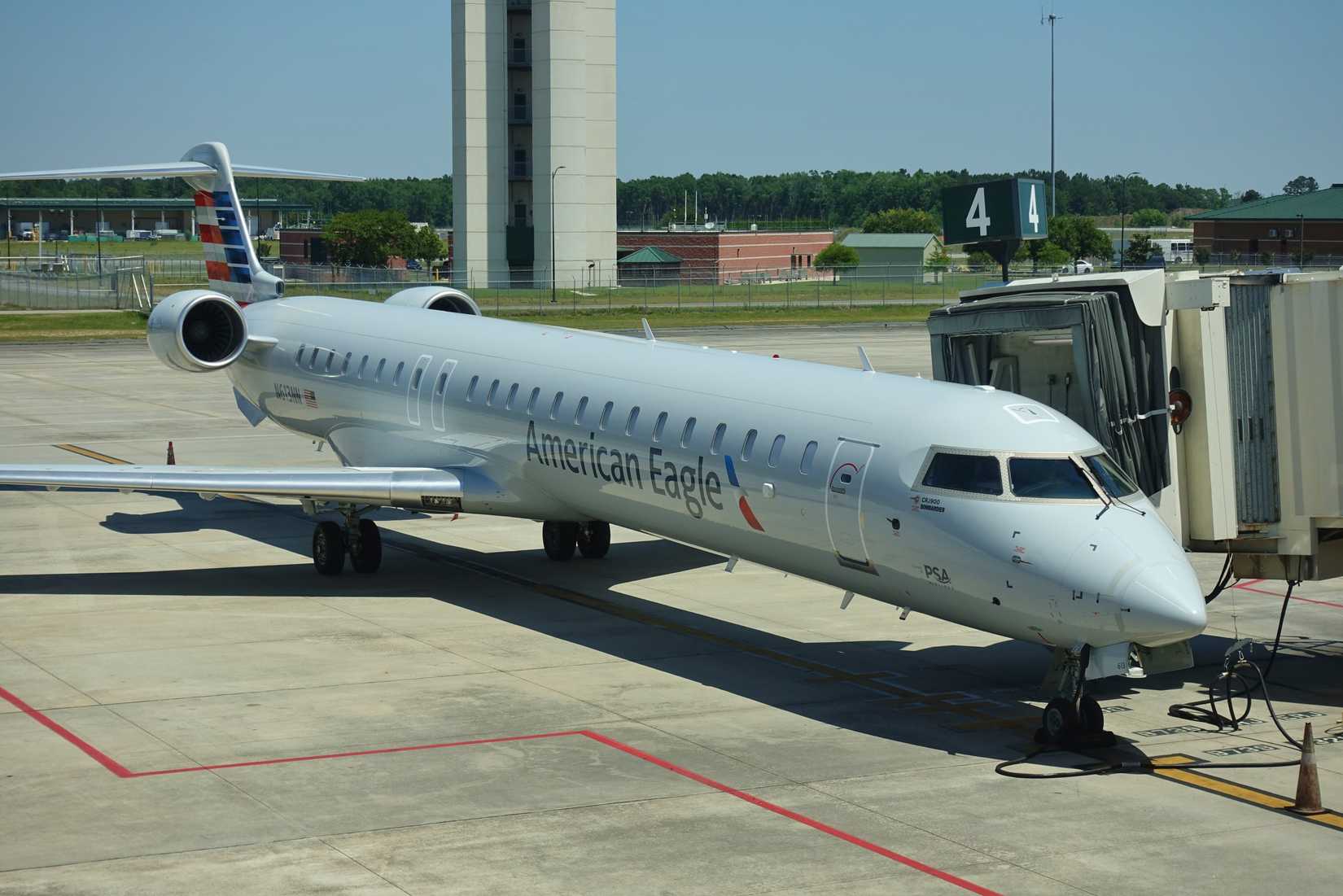A refueling operation at  Dallas/Fort Worth International Airport turned chaotic when a ground worker lost control of a fuel hose while fueling an American Eagle CRJ-900 on October 11, 2025, per the New York Post. The hose whipped beneath the aircraft, dousing the plane and the surrounding ramp area in jet fuel. The sudden failure prompted emergency crews to intervene and contain the spill before it could escalate further.
Dallas/Fort Worth International Airport turned chaotic when a ground worker lost control of a fuel hose while fueling an American Eagle CRJ-900 on October 11, 2025, per the New York Post. The hose whipped beneath the aircraft, dousing the plane and the surrounding ramp area in jet fuel. The sudden failure prompted emergency crews to intervene and contain the spill before it could escalate further.
The aircraft was stationed at Terminal E at the time, preparing for departure when the incident occurred. Observers on site captured video showing streams of fuel spraying across the ramp and forming hazardous pools on the ground, a reminder of how quickly routine ground operations can go awry. No injuries have been reported, and initial reports suggest the aircraft and infrastructure escaped serious damage.
What Happened?
The ground worker, employed by contract company Menzies, was reportedly disconnecting the hose from the aircraft when the hose lost grip, causing pressurized jet fuel to spray uncontrolled. The hose swung unpredictably beneath the CRJ-900, releasing fuel into multiple zones on the apron. The incident occurred in the early morning hours on Saturday, October 11, 2025, and the aircraft involved was N593NN, a CRJ-900 operated by PSA Airlines.
Emergency response crews were dispatched quickly, deploying absorbent pads and containment booms to limit the spread of the fuel and shutting off affected fueling circuits. Adjacent operations were halted temporarily to ensure safety during the cleanup. The rapid containment likely prevented a more serious fire risk or environmental escalation. The aircraft was cleaned and placed into regular service later that same day.
Operators and airport authorities are now investigating whether safety protocols, such as deadman cut-off switches or automated shutoff safeguards, were properly engaged or had failed. The fueling contractor, airport, and ![]() American Airlines are likely to review training, equipment condition, and standard operating procedures in the aftermath.
American Airlines are likely to review training, equipment condition, and standard operating procedures in the aftermath.
Safety Protocols & Potential Failure Points
Fueling aircraft involves strict safety systems: pressurized lines, shutoff valves, pressure relief, grounding, overpressure sensors, and procedural checks. A malfunction or human error in any link can cause a dangerous scenario. The hose in this incident appears to have failed during disconnection, one of the most vulnerable moments in the fueling sequence.
The deadman switch is one common safety feature: a mechanism requiring continuous operator input (hand pressure or button hold) to keep fuel flowing. If the operator releases, fuel flow should immediately stop. Investigators will examine whether that safeguard was bypassed or malfunctioned, and how this was possible.
Wear, maintenance negligence, hose fatigue, connector failure, or improper procedure may also be factors. The investigation will likely inspect hose integrity, coupling mechanisms, pressure regulation, and whether best practice checks, such as line purging or pressure equalization, were executed. From there, recommendations will be made to prevent a repeat.
Risk Management & Preventing Future Recurrences
While refueling mishaps are rare, their consequences can be catastrophic. Jet fuel is an extremely flammable substance, and a spark or heat source could trigger ignition. Even if an aircraft is undamaged, the reputational risk and scrutiny on ground safety protocols intensify after such events. The cleanup and inspection afterward can also be costly and can lead to delays.
Airlines and ground service providers must continuously train and audit their refueling teams. Incidents like this often lead to deeper reviews of supplier oversight, preventive maintenance schedules, and safety culture. The financial cost of damage, downtime, legal exposure, and regulatory fines can be significant. Additionally, the fuel landing on the worker poses significant health risks for the employee involved, especially given the amount to which they were exposed.
|
Potential Health Risks Of Touching Jet Fuel |
|---|
|
Skin Irritation |
|
Chemical Burns |
|
Dermatitis |
|
Bloodstream absorption |
|
Added risk of various cancers |
For passengers, incidents like these can shake confidence in ground operations. While no one was injured, the visual of fuel spraying on an aircraft and the apron is unsettling. Confidence in aviation safety is critical to the perception of air travel, and it’s in all parties’ interests to not only make aviation as safe as possible, but to make sure that passengers are aware of it. In this case, the public perception impact is likely to be minor, but it’s still a factor that the parties involved will be observing.





